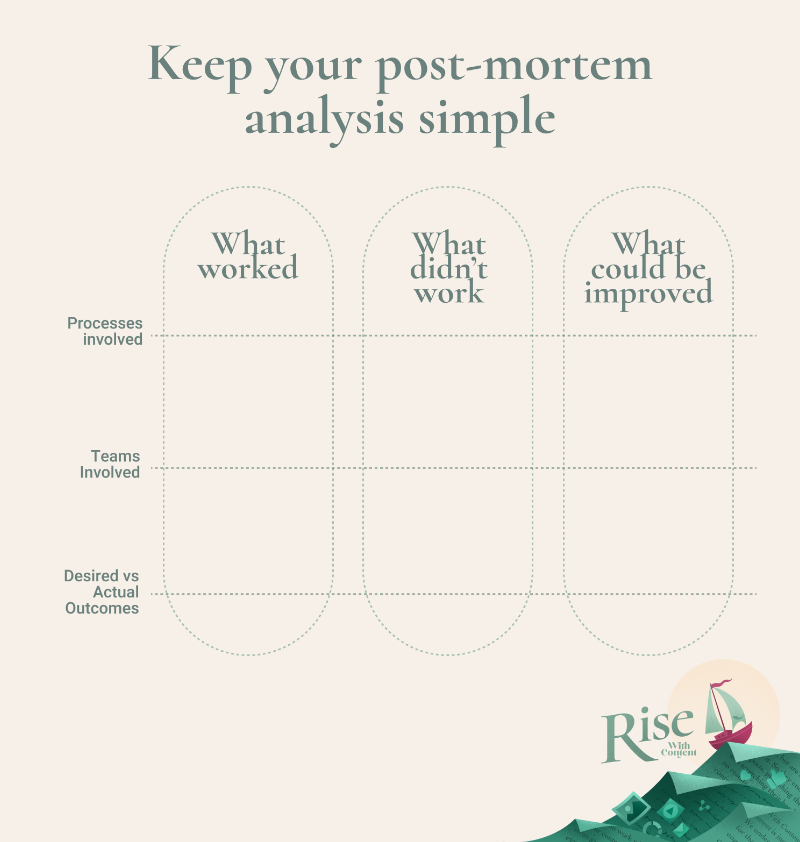
Don’t cry over ideas and spilled [coconut] milk
Legend has it that nasi lemak was invented when a girl named Seri accidentally spilled coconut milk on the rice she was cooking.
True or not, this tale shares parallels with popular eureka moments in history: it contains a happy accident.
The accident never would have happened if Seri hadn’t bothered with the chore of cooking rice. Or if, paralyzed by perfectionism and gripped by the fear of disappointing her mother, she had tossed out the rice, ignoring its fragrance.
That’s how creative ideas and strategies die.
Or to be precise, that’s how they fail to materialize in the first place.
Why are we talking about creativity now?
Because content marketing is facing a crisis.
The internet is so saturated with content that it’s become difficult to cut through the noise and reach your audience.
Attribution models are in doubt. And besides, in Southeast Asia, marketing teams tend not to have sophisticated performance measurement tools and models for content.
Near-term bias leads to formulaic marketing with shallow results. Templates dictate content for the sake of meeting publishing quotas. Articles over-optimized for Google’s bots quickly gain search results ranking but fail to stick to the reader’s mind.
Creativity isn’t a magic bullet, and shouldn’t be a goal in itself. Rather, it’s a means for us to define content marketing based on what works in our own contexts.
A way to form your own best practices, build a treasure trove of ideas, and create an environment conducive to marketing breakthroughs.
A way to create culturally resonant campaigns that increase your mindshare among a broad audience — like how a dish of fragrant, flavored rice grew beyond its initial confines to capture many palates.
No face lost over spilled (coconut) milk
Society and corporate world are filled with fear — fear of:
- wrong answers
- imperfect work
- the appearance of failure
- a lost argument
- displeased bosses.
These fears are tied to the delicate unspoken norms that rule our everyday interactions — even in creative professions like marketing.
Yet research shows the quantity of experiments, including accidents, contributes to the generation of quality ideas.
How do we make room for these accidents amidst our delicate norms?
We have three ideas.
1. Tap into competitiveness: Make a contest over the most number of ideas produced

This activity is useful in the ideation phase or to warm up for a brainstorming session.
How to do this
- Present the customer pain you must solve with your company’s unique proposition.
- Set a timer to one minute and challenge participants to write down as many ideas as possible.
- Emphasize that ideas can be silly; the goal in this phase is quantity, not quality.
Why do this
- You give your team permission to present less-than-perfect ideas and assure them that doing so won’t result in failure, defeat, or losing face.
- You get mediocre ideas out of the way.
- You get diverse ideas and can iterate on them to develop better ones.
2. Remove fear: Create the conditions for serendipity

How to do this
- Schedule time for marketing teams to learn from — and teach — other teams or departments. For instance, at With Content, we have a creative break once a month, a quarterly workshop, a learning allowance, and this newsletter. Writers join design sessions, and vice versa.
- Have a list of low-risk projects that improve marketing functions but that are voluntary and open to all. For instance, any person within or outside the marketing team might want to tackle a different way to measure content performance.
- Grab holds an annual pitching event where teams create prototypes of their dream projects. This has led to product features being launched in a span of weeks instead of months. Hold your own version for your marketing team with a half-day sprint and require teams to be made up of people with different roles.
Why do this
- By explicitly acknowledging that people are doing something beyond their domains, you remove expectations of success at first try.
- By mixing disciplines, you create the conditions for ideas from different spheres to clash, coincide, and combine.
- You allow ambiguity and remove the pressure to ‘know it all’. (This is important because research by Singapore Management University professors shows a high need for ‘cognitive closure’ hampers creativity.)
2. Remove fear: Create the conditions for serendipity

One of my favorite practices is post-mortem analysis. I do this with my team after concluding client projects, whether they were a success or a struggle. I also do this on my own when I get negative or positive feedback, or when I fail or succeed in meeting a goal.
A successful post-mortem analysis can only be achieved with honesty and trust. Let your team know the results of this analysis will be valuable in bringing your company to new levels of excellence.
How to do this
- Ask each participant to write about what worked, what didn’t, and what could be improved. They should do this individually, at least a day before the group session.
- Group discussion: Revisit each phase of the project, the challenges and successes experienced, and the factors that contributed to them.
- Identify lessons learned and best practices to adopt.
Why do this
- You’ll discover ideas you hadn’t thought of because you didn’t need to think about them in the past. Several best practices — and even new offerings like custom illustrations — we’ve established at With Content have come from post-mortem analyses.
- Redirect the paiseh felt from mistakes into a productive effort.
- Boost morale by emphasizing gains, not losses.
Build the case for creative marketing
Need to convince your team with evidence-based arguments?
Here’s further reading:
- The argument for quantity in ideation: Quantity Yields Quality When It Comes to Creativity (Frontiers in Psychology)
- Why breakthroughs stem from eclectic teams: Perfecting Cross-Pollination (Harvard Business Review)
- The value of focusing on errors: Deliberate Errors Promote Meaningful Learning (National University of Singapore)
Let’s raise the bar of content marketing in Southeast Asia
We hope you enjoy Rise and find this newsletter helpful.
And if you do, why not share it with a friend?
Thanks for reading!
![]()
Katrina
with help from Daniel & Nikki
Illustration by Aldrin



